Although I still envy cooks who can readily buy really fresh – or live – shrimp (prawns, as some people call them) caught in the wild, I’ve made my peace with the fact that here in Manhattan I cannot. For many reasons, I avoid those that have been farmed, but at least I now understand the considerable virtues of frozen wild Gulf of Mexico shrimp.
That’s by way of saying that Jackie and I eat them from time to time, and one of our favorites is shrimp with linguine or thin spaghetti, sometimes red (with tomato), sometimes white (without). Whatever the color, one of the most important things is not to overcook the shrimp, and the red version we ate the other day provides a good example of how to keep them from turning into tough seafood-flavored chunks. All it takes is a slotted spoon and one extra step.
I started by not wasting the shells (you can waste them if you like and skip this part): After defrosting eight biggish shrimp for two portions (these ran 16/20 to a pound, say 30 or 35 grams apiece), I shelled them and cooked the shells for half a minute or so in a little olive oil, until they’d turned pink; I then added a splash of white wine, reduced it to almost nothing and added a quarter cup (60 ml) of simple tomato sauce (as described a few weeks ago) plus enough water to cover the shells. I simmered it for ten minutes, then strained out the shells, yielding a pleasant broth (a fumet, I suppose they’d call it in cooking school) – not startlingly powerful in flavor, but redolent of shrimp.
While the fumet was cooking, I cut each shrimp into three: I sliced off a nugget crosswise at the tail end, then cut the thicker part of the shrimp lengthwise from back to belly, which also gave me the opportunity to remove the black digestive tract. I sprinkled the shrimp with salt and a teaspoon of olive oil and set them aside for a bit.
Once I’d put up a pot of salted water in which to boil the linguine, I set about making the sauce. In a skillet big enough to eventually hold the pasta, I slowly toasted a sliced clove of garlic and a sprinkling of hot pepper flakes (you could use a whole dried chili or indeed a sliced fresh one) in a couple of tablespoons of olive oil. When the garlic had turned golden (not too brown), I added the shrimp and cooked them until nearly opaque – this took about a minute including turning them over after 45 seconds or so – then removed them with a slotted spoon and set them aside: that’s the key step that many cooks omit.
I added the shrimp fumet and about a cup of tomato sauce to the skillet, brought this to the simmer, and put my linguine in to the big pot to boil. As the pasta cooked, I seasoned the sauce and reduced it a little – it oughtn’t to be too intense, but it must have plenty of flavor. When the linguine were a couple of minutes shy of being done, I returned the shrimp to the skillet along with a few leaves of fresh sage, slivered (basil would be nice too, or parsley). Their brief time in the simmering sauce was enough to heat them through and complete their cooking without overdoing them.
Finally, I drained the 95-percent-done pasta and added it to the skillet over medium-low heat, saving some of the cooking water in case more liquid was needed (in this case, it wasn’t). The time it took to stir the pasta into the sauce and let it take on some more flavor was all it took to finish it.
A final check for salt, and I slid everything into a well-heated serving bowl – no cheese, no more herbs, not even a final drizzle of olive oil (though the latter two additions would have been fine). Because of the shrimp-shell fumet, the light tomato sauce was well integrated into the dish. And the shrimp themselves were a real joy to eat: tender and flavorsome.
So take that extra step and keep those shrimp from turning hard.
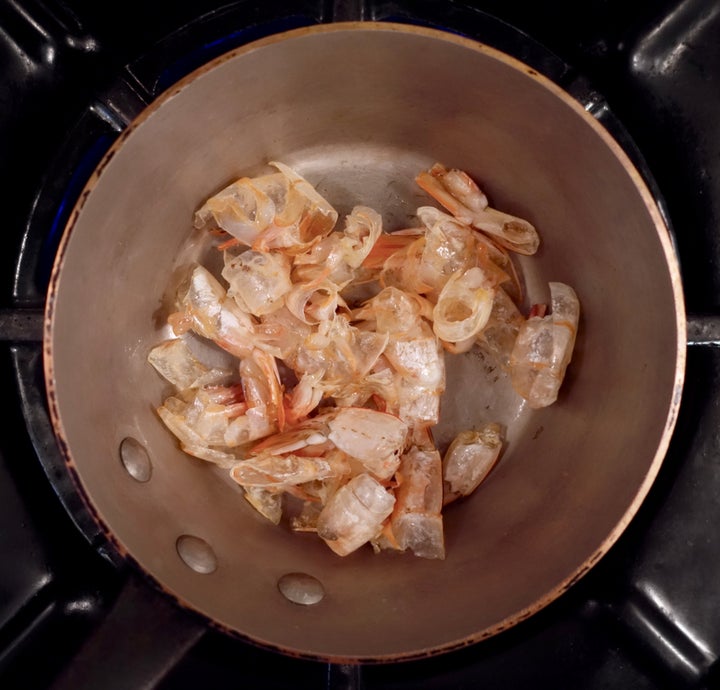
The shrimp shells, sauteed until pink
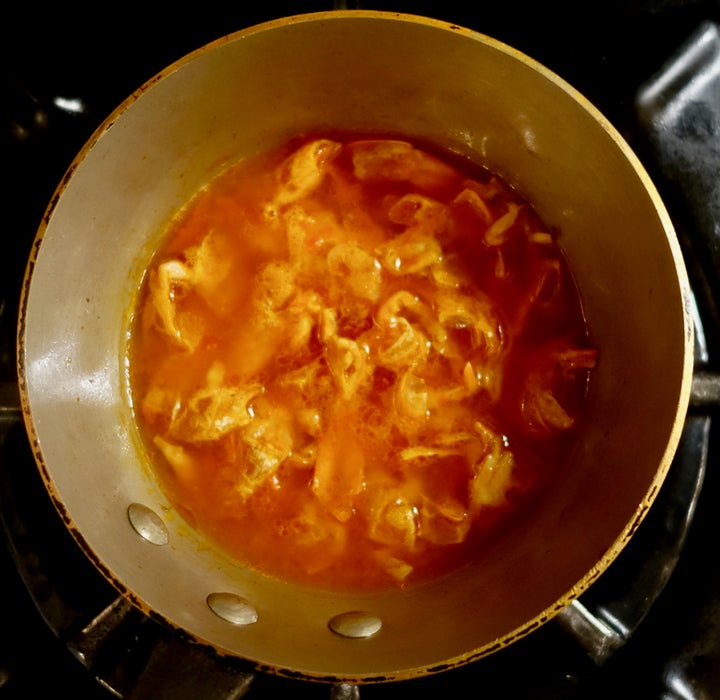
Simmering with white wine, tomato sauce and water
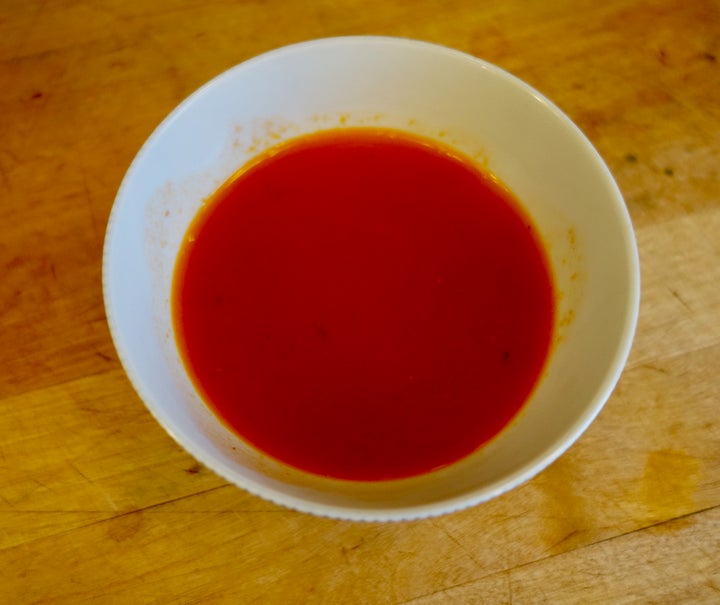
The shrimp-shell “fumet” is the basis of the sauce
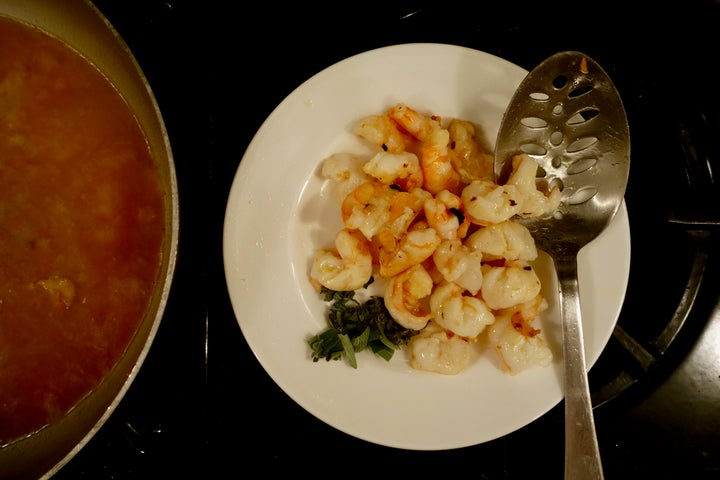
Set the shrimp aside when they are barely cooked (the green on the plate is sage)
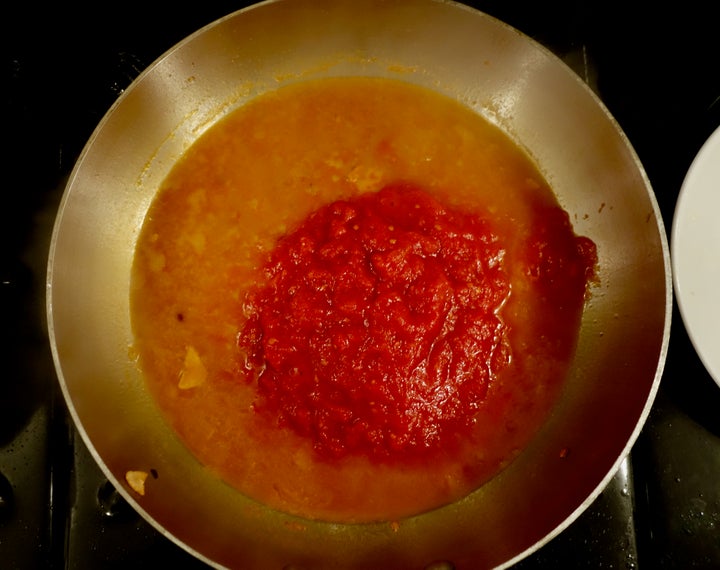
Tomato sauce added to the garlic-and-chili-scented fumet.
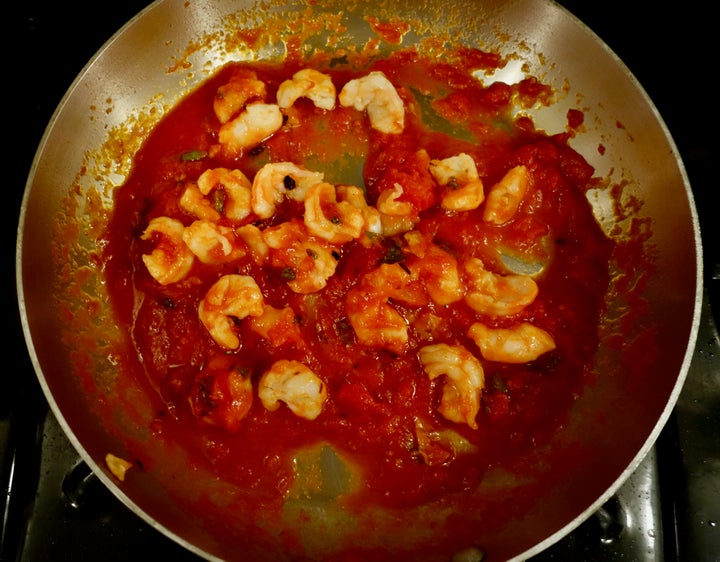
When the pasta is nearly done, shrimp and sage go into the skillet
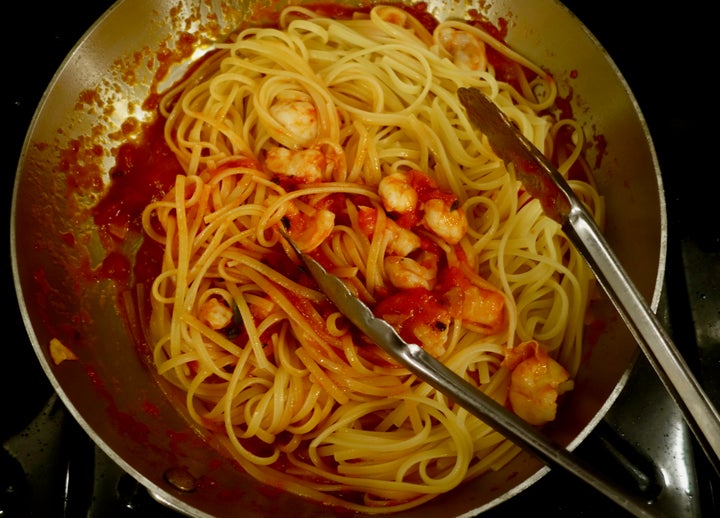
Then the pasta goes in
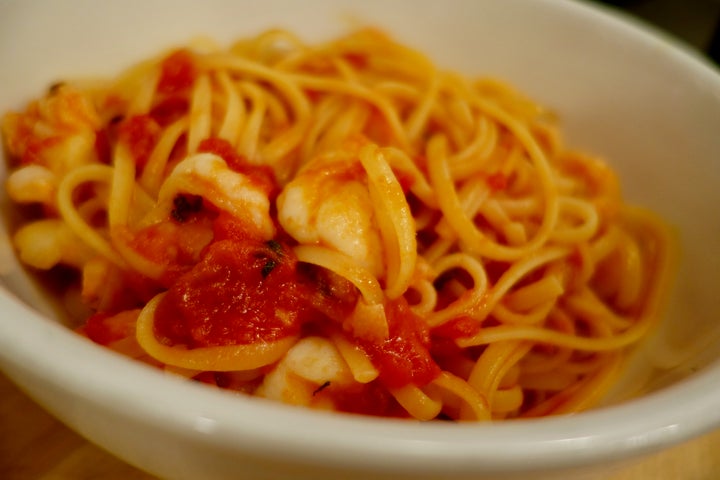
Linguine with shrimp/prawns